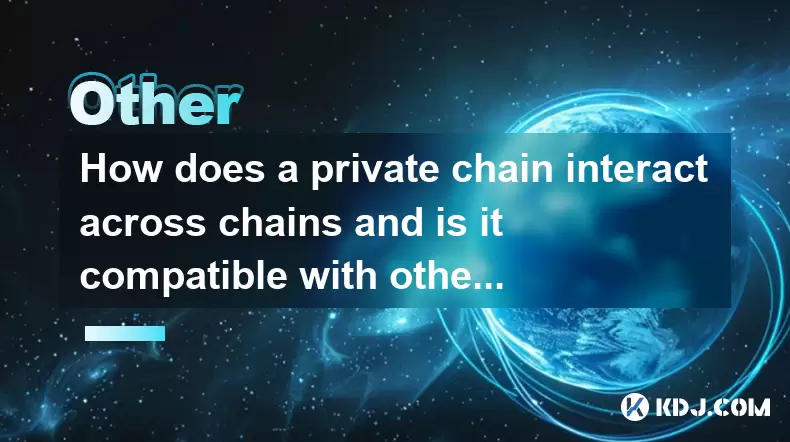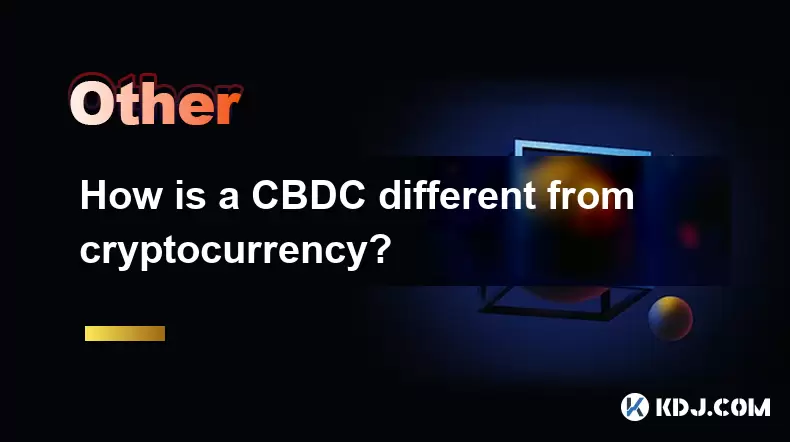-
 Bitcoin
Bitcoin $118900
-2.35% -
 Ethereum
Ethereum $4632
-2.72% -
 XRP
XRP $3.109
-3.96% -
 Tether USDt
Tether USDt $1.001
0.04% -
 BNB
BNB $849.9
-1.82% -
 Solana
Solana $195.6
-4.49% -
 USDC
USDC $0.9999
0.03% -
 Dogecoin
Dogecoin $0.2307
-4.65% -
 TRON
TRON $0.3588
-2.41% -
 Cardano
Cardano $0.9448
-4.09% -
 Hyperliquid
Hyperliquid $48.52
3.63% -
 Chainlink
Chainlink $22.41
-5.29% -
 Sui
Sui $3.848
-3.16% -
 Stellar
Stellar $0.4276
-4.33% -
 Bitcoin Cash
Bitcoin Cash $594.9
-2.14% -
 Ethena USDe
Ethena USDe $1.001
0.07% -
 Hedera
Hedera $0.2547
-5.06% -
 Avalanche
Avalanche $25.02
-0.86% -
 Litecoin
Litecoin $121.1
-5.47% -
 UNUS SED LEO
UNUS SED LEO $9.645
3.95% -
 Toncoin
Toncoin $3.460
-2.78% -
 Shiba Inu
Shiba Inu $0.00001300
-5.26% -
 Uniswap
Uniswap $11.00
-4.85% -
 Polkadot
Polkadot $4.013
-4.90% -
 Dai
Dai $1.000
0.02% -
 Bitget Token
Bitget Token $4.670
-2.13% -
 Cronos
Cronos $0.1553
-5.42% -
 Ethena
Ethena $0.7282
-0.16% -
 Aave
Aave $312.1
-4.63% -
 Pepe
Pepe $0.00001111
-7.17%
How does a private chain interact across chains and is it compatible with other chains?
Private chains can interact with other blockchains using atomic swaps, sidechains, and cross-chain bridges, despite facing privacy and governance challenges.
May 15, 2025 at 04:07 pm

Understanding Private Chains and Their Functionality
A private chain, also known as a permissioned blockchain, is a type of blockchain network where access and participation are controlled by a single organization or a consortium of organizations. Unlike public blockchains, where anyone can join and participate, private chains are restricted to a select group of participants. This controlled environment offers advantages such as increased privacy, better scalability, and the ability to comply with regulatory requirements. However, one of the critical questions that arise is how these private chains can interact with other blockchains, including both public and other private chains, and whether they are compatible with these other networks.
The Concept of Cross-Chain Interaction
Cross-chain interaction refers to the ability of different blockchain networks to communicate, share data, and conduct transactions with one another. This capability is essential for the broader adoption and utility of blockchain technology, as it allows for interoperability between different ecosystems. For private chains, cross-chain interaction can be particularly beneficial, as it enables them to leverage the strengths of other networks while maintaining their unique characteristics.
Mechanisms for Cross-Chain Compatibility
To facilitate cross-chain interaction, several mechanisms have been developed. Atomic swaps, sidechains, and cross-chain bridges are among the most commonly used methods. Each of these mechanisms has its own set of advantages and challenges, particularly when applied to private chains.
Atomic Swaps: These are smart contract-based transactions that allow for the exchange of one cryptocurrency for another without the need for a trusted third party. For private chains, atomic swaps can be challenging due to the need for both chains to support smart contracts and the potential for privacy issues when revealing transaction details.
Sidechains: A sidechain is a separate blockchain that is pegged to the main blockchain, allowing assets to be transferred between the two. For private chains, sidechains can be an effective way to interact with other networks while maintaining control over the main chain. However, the setup and management of sidechains can be complex.
Cross-Chain Bridges: These are specialized protocols that enable the transfer of assets or data between different blockchains. Cross-chain bridges can be particularly useful for private chains, as they can be designed to meet specific security and privacy requirements. However, the development and maintenance of these bridges can be resource-intensive.
Compatibility Challenges for Private Chains
While the mechanisms mentioned above provide pathways for cross-chain interaction, private chains face unique challenges in achieving compatibility with other networks. Privacy and security are paramount concerns for private chains, as they often deal with sensitive data and transactions. Ensuring that cross-chain interactions do not compromise these aspects can be difficult.
Additionally, governance and control are significant factors. Private chains are typically governed by a centralized authority or a consortium, which may have different interests and priorities compared to public chains. Aligning these governance models to enable seamless interaction can be a complex process.
Technical Considerations for Cross-Chain Interaction
From a technical standpoint, consensus mechanisms play a crucial role in cross-chain interaction. Private chains often use different consensus algorithms than public chains, which can complicate the process of establishing trust and verifying transactions across networks. For instance, a private chain using a Proof of Authority (PoA) consensus might need to interact with a public chain using Proof of Work (PoW) or Proof of Stake (PoS).
Interoperability protocols are also essential for enabling private chains to communicate with other networks. These protocols need to be robust enough to handle the diverse technical specifications and security requirements of different blockchains. Developing such protocols requires a deep understanding of the underlying technology and the specific needs of the private chain.
Case Studies of Private Chain Cross-Chain Interaction
Several real-world examples illustrate how private chains can successfully interact with other blockchains. One notable case is Hyperledger Fabric, a popular platform for building private chains, which has been integrated with public blockchains like Ethereum through cross-chain bridges. This integration allows for the transfer of assets and data between the private and public ecosystems, enhancing the utility of both networks.
Another example is Corda, another private blockchain platform, which has implemented interoperability with other blockchains through the use of sidechains. This approach enables Corda networks to leverage the capabilities of other blockchains while maintaining the privacy and control that are hallmarks of private chains.
Implementing Cross-Chain Interaction on a Private Chain
For organizations looking to enable cross-Chain interaction on their private chain, the process involves several detailed steps:
Assess the Need for Interoperability: Determine the specific requirements for cross-chain interaction, including the types of data or assets that need to be transferred and the desired level of privacy and security.
Choose the Right Mechanism: Based on the assessment, select the most appropriate mechanism for cross-chain interaction, such as atomic swaps, sidechains, or cross-chain bridges.
Develop and Test the Solution: Work with developers and blockchain experts to design and implement the chosen mechanism. Thorough testing is crucial to ensure that the solution meets the required standards for security and performance.
Integrate with Other Chains: Once the solution is developed and tested, proceed with integrating the private chain with the target blockchain(s). This may involve setting up the necessary infrastructure, such as nodes or validators, and ensuring that the governance models of both chains are aligned.
Monitor and Maintain: After the integration is complete, continuous monitoring and maintenance are necessary to ensure the smooth operation of the cross-chain interaction. This includes addressing any issues that arise and updating the solution as needed to keep pace with evolving technology and regulatory requirements.
Frequently Asked Questions
Q: Can a private chain interact with multiple public chains simultaneously?
A: Yes, a private chain can be designed to interact with multiple public chains simultaneously. This typically involves setting up multiple cross-chain bridges or sidechains, each tailored to the specific requirements of the public chain in question. However, managing such a complex network requires robust technical infrastructure and governance mechanisms.
Q: How does the privacy of a private chain affect its ability to interact with public chains?
A: The privacy of a private chain can pose challenges when interacting with public chains, as the latter often require transparency and openness. To address this, private chains may use encryption techniques or zero-knowledge proofs to share data selectively without compromising privacy. Additionally, the choice of cross-chain mechanism can impact privacy, with some methods being more suitable for preserving confidentiality than others.
Q: Are there any regulatory considerations when a private chain interacts with other chains?
A: Yes, regulatory considerations can significantly impact cross-chain interactions. Depending on the jurisdiction and the nature of the data or assets being transferred, there may be compliance requirements that need to be met. This could include anti-money laundering (AML) and know-your-customer (KYC) regulations, data protection laws, and other legal frameworks. Ensuring compliance often involves implementing additional controls and reporting mechanisms within the cross-chain interaction solution.
Q: What are the potential risks associated with cross-chain interaction for private chains?
A: Cross-chain interaction introduces several risks for private chains, including security vulnerabilities, smart contract bugs, and potential breaches of privacy. Additionally, there is the risk of technical failures or disruptions in the cross-chain infrastructure, which could impact the overall performance and reliability of the network. To mitigate these risks, it is essential to conduct thorough security audits, implement robust monitoring systems, and maintain a proactive approach to risk management.
Disclaimer:info@kdj.com
The information provided is not trading advice. kdj.com does not assume any responsibility for any investments made based on the information provided in this article. Cryptocurrencies are highly volatile and it is highly recommended that you invest with caution after thorough research!
If you believe that the content used on this website infringes your copyright, please contact us immediately (info@kdj.com) and we will delete it promptly.
- Kazakhstan's Crypto Leap: Bitcoin ETF and Central Asia's Digital Finance Future
- 2025-08-13 12:45:19
- BlockDAG Presale Blazes Past $371M: Fundraising Frenzy Fuels Crypto Sensation
- 2025-08-13 13:05:21
- Meme Coins: Chasing the 2025 Surge – Which Will Moonshot?
- 2025-08-13 10:25:23
- Bitcoin's Wild Ride: Rally, Pullback, and What's Next
- 2025-08-13 10:25:23
- Bitcoin, Bitmax, and Institutional Demand: A New Era of Crypto Investment
- 2025-08-13 10:45:12
- Solana, ROAM, and Airdrops: What's the Buzz in 2025?
- 2025-08-13 11:35:13
Related knowledge

How does blockchain enable Web3?
Aug 13,2025 at 11:35am
Understanding the Role of Blockchain in Web3 InfrastructureBlockchain serves as the foundational layer upon which Web3 is built, enabling a decentrali...

How is a CBDC different from cryptocurrency?
Aug 12,2025 at 09:21am
Understanding the Core Nature of CBDCsA Central Bank Digital Currency (CBDC) is a digital form of a country’s sovereign currency, issued and regulated...

What is a CBDC (Central Bank Digital Currency)?
Aug 13,2025 at 11:36am
Understanding the Concept of a Central Bank Digital CurrencyA CBDC (Central Bank Digital Currency) is a digital form of a country’s fiat currency that...

How can zero-knowledge proofs enhance privacy on a blockchain?
Aug 12,2025 at 02:15am
Understanding Zero-Knowledge Proofs in Blockchain ContextZero-knowledge proofs (ZKPs) are cryptographic protocols that allow one party (the prover) to...

How does blockchain governance work?
Aug 13,2025 at 11:35am
Understanding Blockchain GovernanceBlockchain governance refers to the mechanisms and processes through which decisions are made about the development...

What is on-chain vs. off-chain data?
Aug 13,2025 at 11:35am
Understanding On-Chain Data in CryptocurrencyOn-chain data refers to all information that is permanently recorded and stored directly on a blockchain....

How does blockchain enable Web3?
Aug 13,2025 at 11:35am
Understanding the Role of Blockchain in Web3 InfrastructureBlockchain serves as the foundational layer upon which Web3 is built, enabling a decentrali...

How is a CBDC different from cryptocurrency?
Aug 12,2025 at 09:21am
Understanding the Core Nature of CBDCsA Central Bank Digital Currency (CBDC) is a digital form of a country’s sovereign currency, issued and regulated...

What is a CBDC (Central Bank Digital Currency)?
Aug 13,2025 at 11:36am
Understanding the Concept of a Central Bank Digital CurrencyA CBDC (Central Bank Digital Currency) is a digital form of a country’s fiat currency that...

How can zero-knowledge proofs enhance privacy on a blockchain?
Aug 12,2025 at 02:15am
Understanding Zero-Knowledge Proofs in Blockchain ContextZero-knowledge proofs (ZKPs) are cryptographic protocols that allow one party (the prover) to...

How does blockchain governance work?
Aug 13,2025 at 11:35am
Understanding Blockchain GovernanceBlockchain governance refers to the mechanisms and processes through which decisions are made about the development...

What is on-chain vs. off-chain data?
Aug 13,2025 at 11:35am
Understanding On-Chain Data in CryptocurrencyOn-chain data refers to all information that is permanently recorded and stored directly on a blockchain....
See all articles

























































































